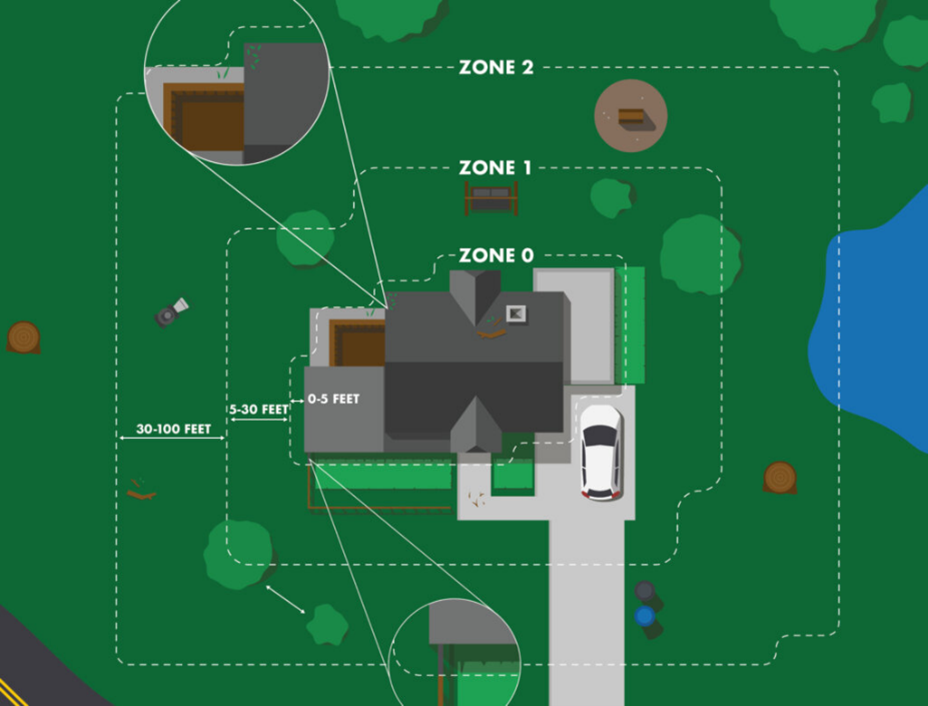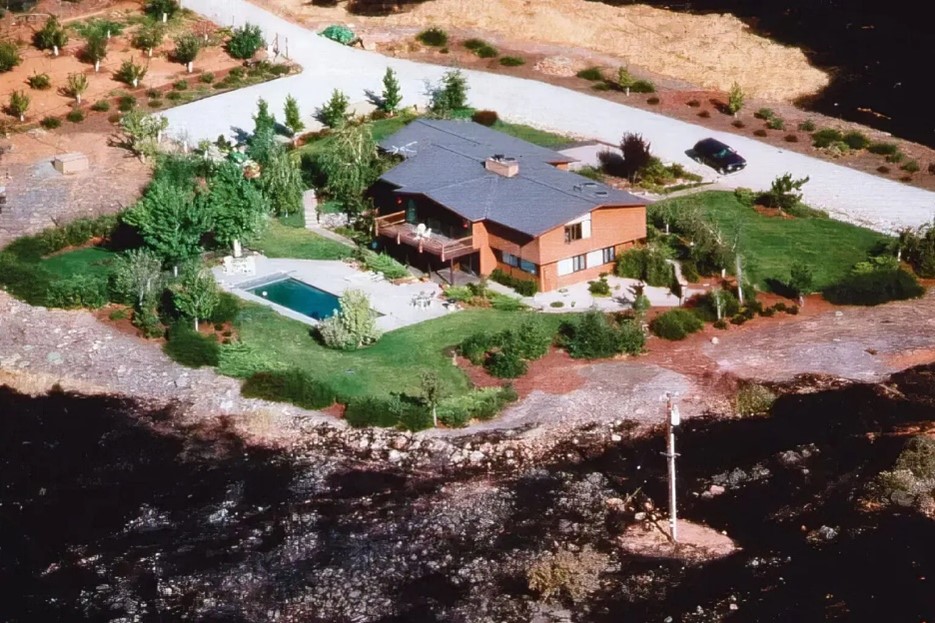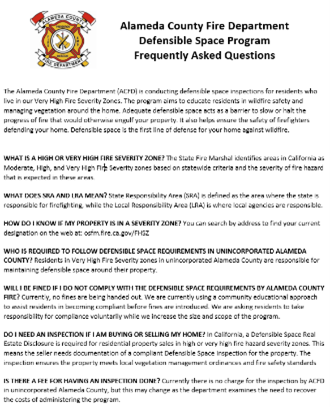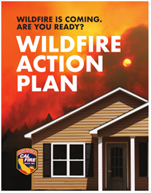Defensible Space
Practical ways to support your home from wildfire.
The Alameda County Fire Department (ACFD) is conducting defensible space inspections for residents who live in our Very High Fire Severity Zones. The program aims to educate residents in wildfire safety and managing vegetation around the home. Adequate defensible space acts as a barrier to slow or halt the progress of fire that would otherwise engulf your property. It also helps ensure the safety of firefighters defending your home. Defensible space is the first line of defense for your home against wildfire.
In California, a Defensible Space Real Estate Disclosure is required for residential property sales in high or very high fire hazard severity zones. This means the seller needs documentation of a compliant Defensible Space Inspection for the property. The inspection ensures the property meets local vegetation management ordinances and fire safety standards.

Defensible Space Zones
Zone 0: Ember-Resistant Zone 0 – 5 feet from building
- Use gravel, pavers or concrete instead of combustible mulch
- Clear dead weeds, grass and debris. Check roofs, gutters, and outdoor areas
- Keep branches trimmed 10 feet away from chimneys and stovepipes
- Relocate garbage containers and any vehicles or boats away from this zone

Zone 1: Lean, Clean, and Green Zone 5 – 30 feet from the building
- Clear and remove all dead leaves, plants, weeds, grass and pine needles from your yard, roofs and gutters
- Regularly trim trees to maintain a 10-foot gap from others
- Prune flammable plants and shrubs near windows
- Clear flammable vegetation and items from under decks, balconies and stairs
- Maintain space between trees, shrubs, and flammable items like patio furniture and wood piles
- Ensure outbuildings and LPG tanks have 10 feet of clear space with bare soil and no flammable vegetation within an additional 10 feet. You can also move this to Zone 2 with the same guidelines.

Zone 2: Reduce Fuel Zone 30-100 feet from the building or to the property line
- Trim annual grass to a maximum height of 4 inches
- Ensure vertical spacing between grass, shrubs, and trees. Trim tree branches up to at least 6 feet from the ground for large trees, and 4 feet for small trees. Increase vertical space between shrubs and trees to prevent fire from climbing. Space out shrubs and trees horizontally. Multiply shrub height by 3 for vertical and horizontal clearance.
- Remove fallen leaves, needles and small branches to reduce kindling
- Maintain space between trees, shrubs, and flammable items like patio furniture and wood piles

Plant Spacing
Proper spacing between grass, shrubs, and trees is key in slowing wildfire spread. This spacing varies based on vegetation type, size, and land slope – larger plants on steeper slopes require more space than smaller vegetation on flat areas.
Vertical Spacing
- Trim tree branches up to at least 6 feet from the ground.
- Increase vertical space between shrubs and trees to prevent fire from climbing.
- Use a formula for vertical spacing: Multiply shrub height by 3 for clearance.
For example: A 5-foot shrub near a tree needs 15 feet of clearance to the tree’s lowest branch.

Horizontal Spacing
Horizontal spacing depends on the slope of the land and the height of the shrubs or trees. Check the chart below to determine spacing distance.

Tips for Clearing in Dry Conditions
- Mow before 10 a.m. and never on a hot or windy day.
- String trimmers are safer than lawnmowers for clearing vegetation.
- When watering less during times of drought, be sure to remove all dead or dying vegetation.



